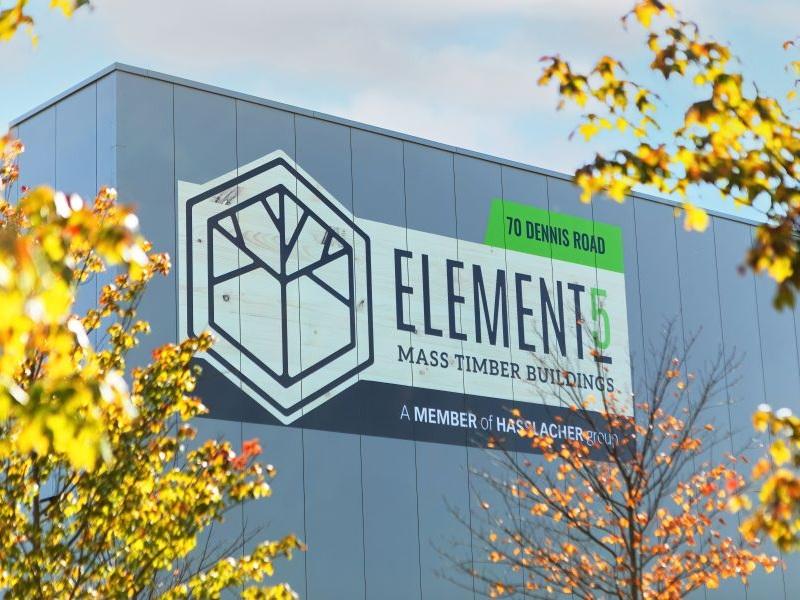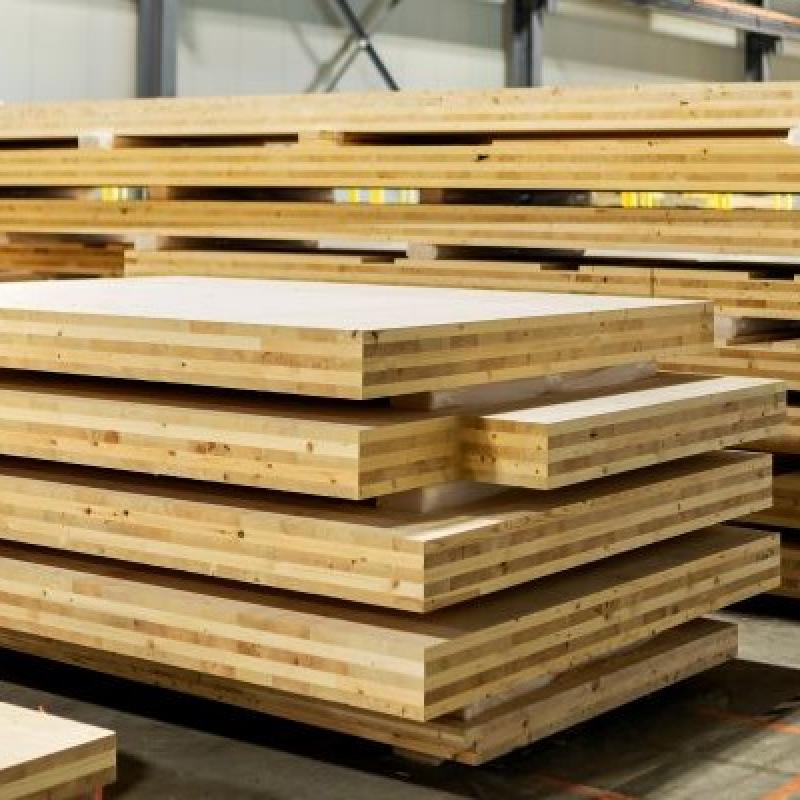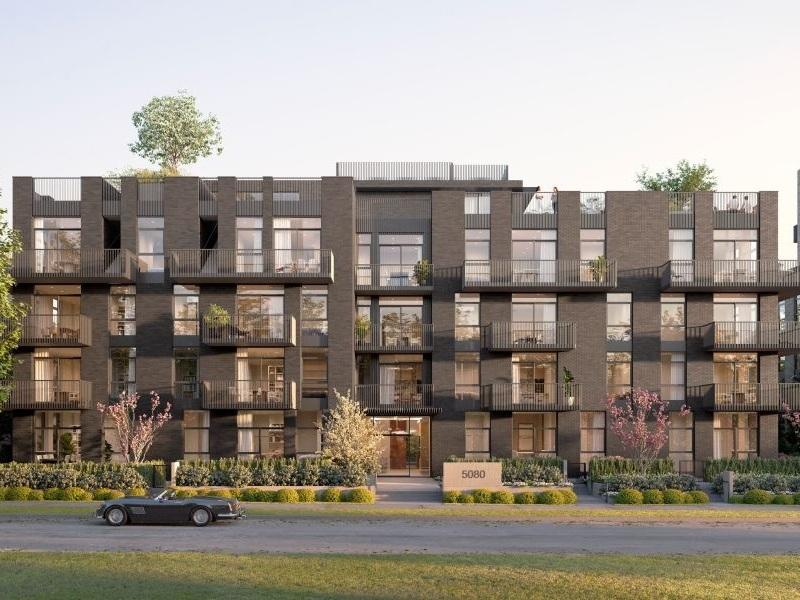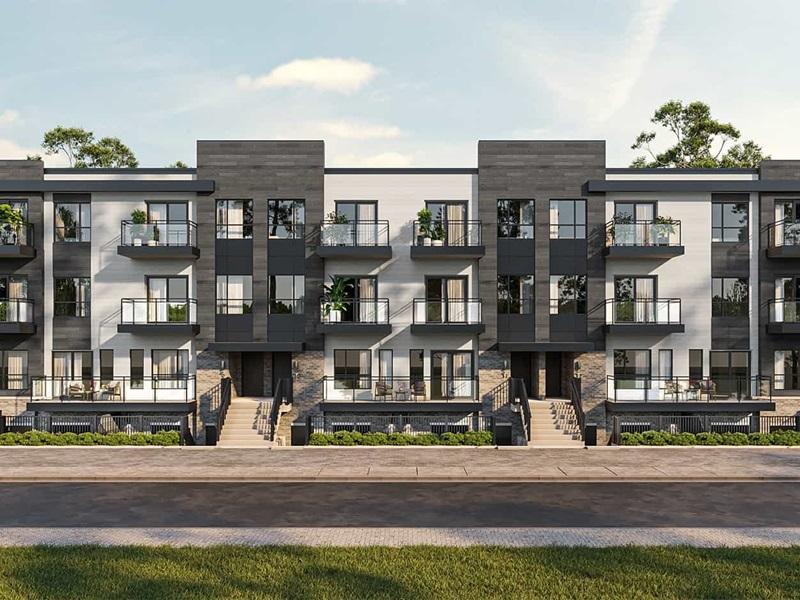
A $107-million expansion that will double the mass timber production capacity at Toronto-based Element5 is a response to increasing demand for housing that can be built quickly and affordably.
The expansion of the factory in St. Thomas, Ont., which was completed in September, upsized it from approximately 130,000 square feet to 350,000 square feet. Annual production capacity has jumped from 40,000 cubic metres to 80,000 cubic metres with the addition of a new line and an additional 150 workers.
Founded in 2015 by mass timber entrepreneur Patrick Chouinard, Element5 manufactures engineered wood panels used to assemble residential, institutional, industrial and commercial buildings.
Affordable housing “has been an increasing market for us more and more,” Chris Latour, president of the company, said in an interview with RENX Homes. The expansion will enable Element5 to expand its catalogue of multi-use housing.
The company has been involved with hundreds of mass timber projects, ranging from three- to 18-storey buildings. Its projects in Ontario include a four-storey supportive housing building in Kitchener and North America’s first mass timber-constructed warehouse in Brampton.
Element5's expansion
Element5 was founded to capitalize on the growth of the mass timber industry in North America by providing the cross-laminated timber (CLT) and glued-laminated timber (glulam) that are so in demand for today's building market, Latour said.
“We thought that there was a real good market on the East Coast and there was a lack of supply. So those two factors made for a real good business case.”
CLT is used primarily for floors and walls while glulam is used mainly for columns and beams.
Element5 has been in touch with government agencies to help introduce more affordable housing supply, he said. Modular construction like the panelized system Element5 employs has been explored in recent years as a way to address Canada’s housing shortage because of its speed of construction and efficiency.
Invest Ontario is supporting the expansion with a loan up to $8 million, subject to reaching a definitive agreement.
The expansion started in November 2023, aimed at raising its glulam production capacity to the same level of CLT by putting in a new glulam line and lumber grading line.
“Being able to supply both glulam as well as CLT,” Latour said, “allows you to supply the full range for our clients so that they don’t have to coordinate with two different companies or suppliers.”
Another purpose was to expand its multi-use housing offerings to luxury condos and more affordable housing.
Latour said Element5 manufactures the panels from St. Thomas and ships them on a truck to where they are needed. Once the panels are on site, they are raised by a crane and put into place.
Through a combination of connections and screws, the panels are fitted to build up the structure level-by-level. Once the assembly is complete, Element5’s engineers review the project.
Once the mass timber structure is set, contractors finish the outer envelope such as the siding and insulation, and the interior work like the HVAC, electrical wiring and flooring.
Increased focus on housing

Element5’s major projects include a Prologis-owned distribution warehouse in Brampton and the structure of the Lawson Centre for Sustainability at the University of Toronto.
Another priority is affordable housing projects, which represents its most popular kind of residential projects, Latour said. One example is the YWCA Supportive Housing in Kitchener, a four-storey, 41-unit, 23,000-square-foot multiresidential building.
Panelized construction is a strong match for affordable housing because of the speed of assembly and cost predictability, Latour said. For example, he said Element5’s process saves 10 to 20 per cent on additional costs that typically arise in traditional construction because it avoids the stresses of on-site construction such as the weather.
Ontario has been a “very successful market” according to Latour, with projects supplied across Canada and to major U.S. cities such as New York City, Boston, Philadelphia and Colorado. Element5 exports 50 to 60 per cent of its production, he added.
Latour plans to focus Element5 on the affordable housing space in Canada with further expansions and investments that may include more production facilities as needed.










